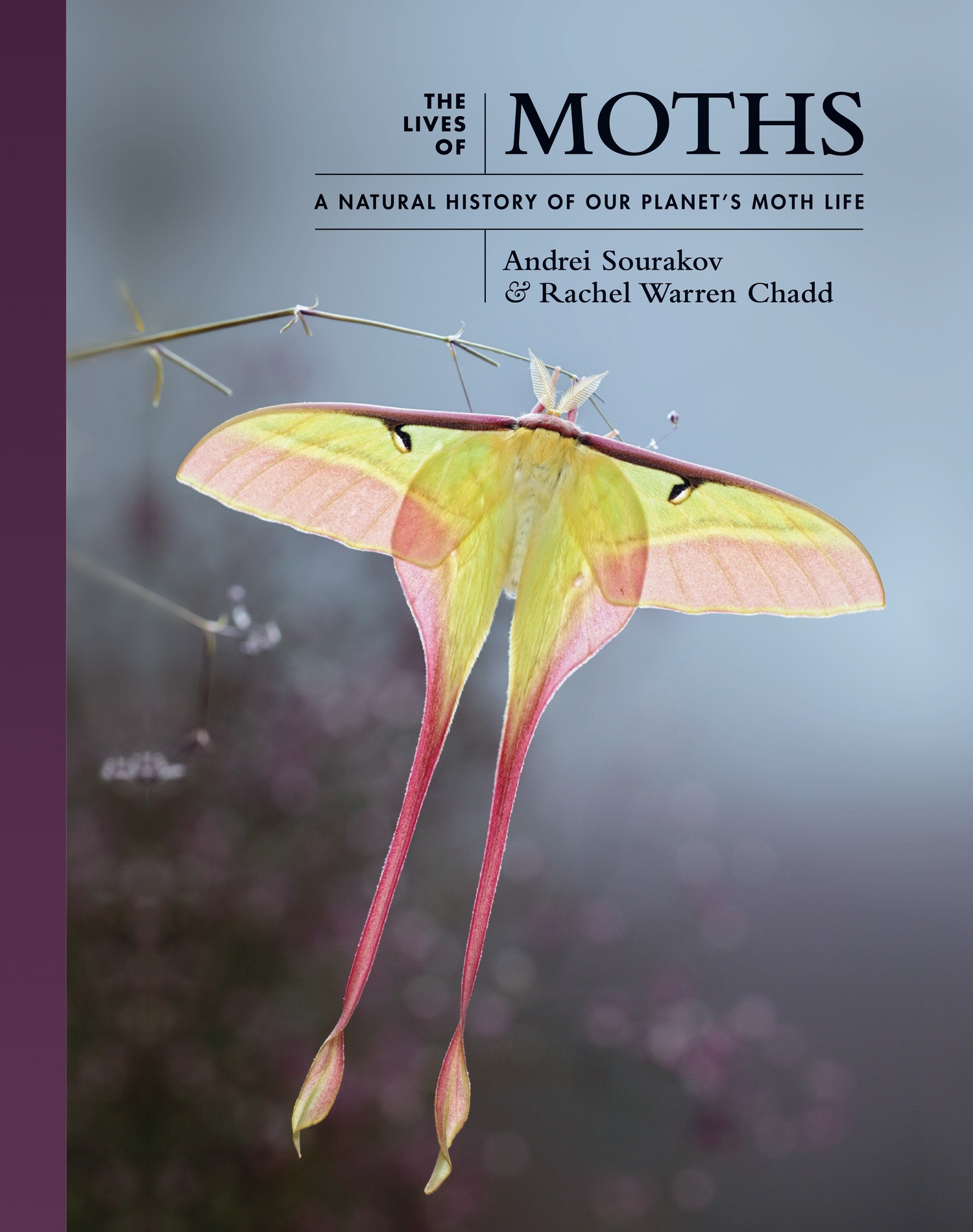Andrei Sourakov & Rachel Warren Chadd
Princeton University Press
2022
ISBN: 9780691228563
Reviewed by Ray Barnett
This substantial book is packed full of excellent photographs of a selection of stunning moths from around the world, including life-cycle stages. In some ways it gives the impression of being a cross between a coffee table-type book, with an emphasis on eye-catching images, and a more serious fact-filled volume with the selected information highlighting the huge variety of moths and their life-styles. Either way it contains something for everyone, from the moth novice to the hardened lepidopterist.
The book starts by setting out to explain exactly what a moth is and how moths fit into the scheme of classification, in two relatively short sections. It then goes into greater detail around the life cycle of moths and their interactions with other groups of organisms such as parasitoids. These sections contain a mix of examples and facts which are short and pithy and contain some very familiar stories, e.g., the Peppered Moth (Biston betularia)and its melanic form, to others less well known, such as how the Frilly Grass Tubeworm Moth (Acrolophus mycetophagus) mimics lizard droppings.
The majority of the book, however, is made up of sections describing selected moth species to be found in the following ecosystems: tropical rain forest, grasslands and meadows, deserts and tundra, temperate deciduous woodland, coniferous woodland and wetlands and finally agroecosystems and human habitations. I confess to being somewhat bemused as to why conifers and wetlands are lumped together and not treated separately, although in practice it makes little difference.
The selection of species chosen throughout the book comes from across the world but with a focus perhaps on those from North America and northern Europe; not surprising given that this is a joint publication by Princeton University Press using expertise and authorship associated with the USA and UK. The excellent images illustrate some of the most photogenic and unusual-looking macro moths as well as larvae. Much less attention has been given to the far more diverse micro moth families and perhaps an opportunity missed to highlight families such as the bagworms and those whose larvae are leaf-mines. This focus on the larger, more colourful macro moths is what gives the book that element of coffee-table book rather than purely a mainstream biological approach.
The number of examples of moth species chosen to complement or demonstrate the particular habitats listed above seems to vary somewhat. That being said, they do deliver in drawing attention to the way that certain insects are intimately connected to specific plant communities. I was surprised, though, that the impacts of climate change and deforestation are only addressed in the tropical forest section and feel that the discussion on the fate of moths trying to survive in a world driven by human pressures is not nearly punchy enough. Perhaps the serious nature of insect declines and the overall threat to the biota posed by human activity may have been thought to detract from what is in effect a celebration of the wonder of this group of insects. This volume draws attention to the beauty and fascinating life cycles to be found in a group of insects which many still regard as pests. As such it does an excellent job.


